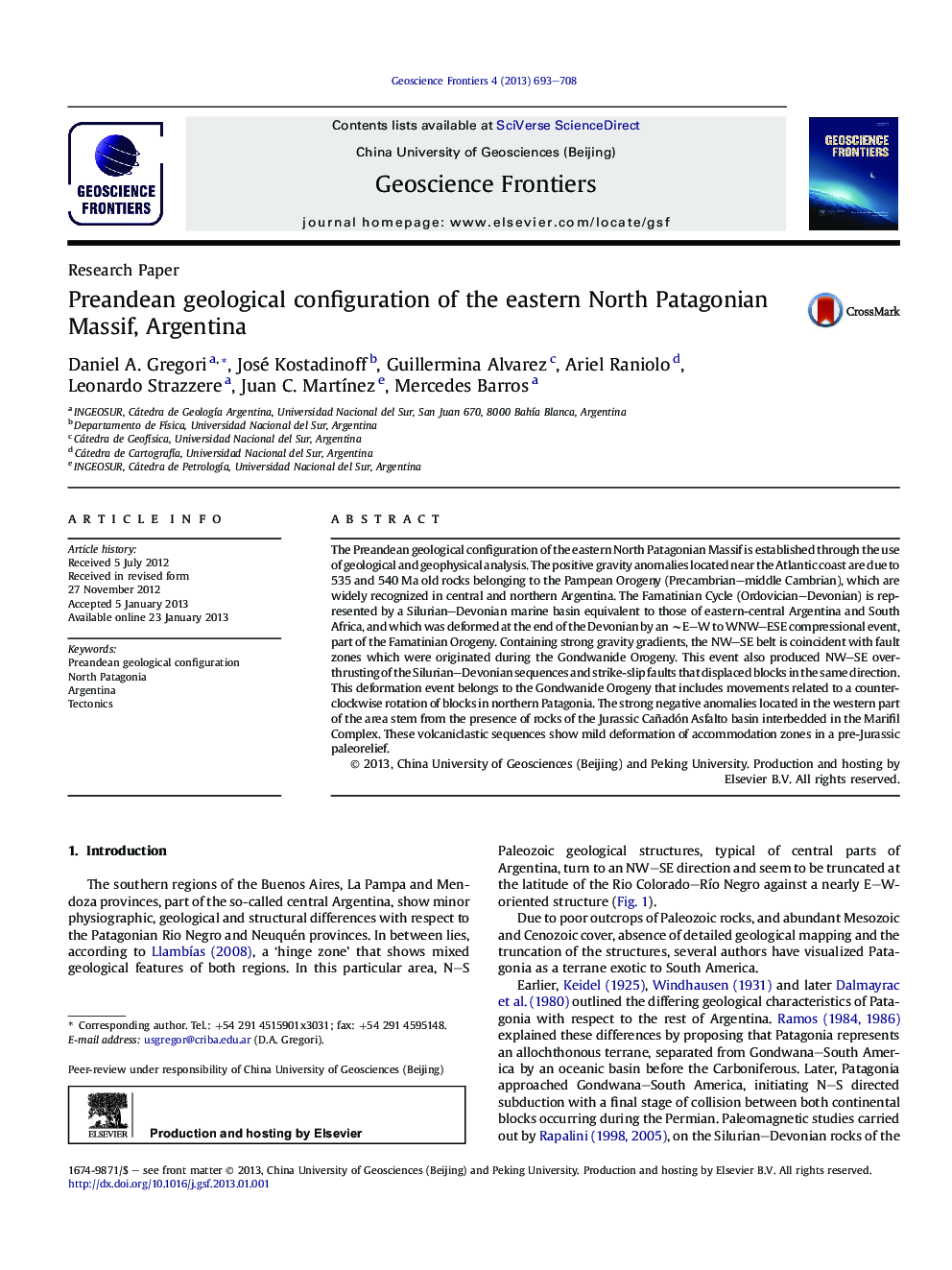| Article ID | Journal | Published Year | Pages | File Type |
|---|---|---|---|---|
| 4681651 | Geoscience Frontiers | 2013 | 16 Pages |
The Preandean geological configuration of the eastern North Patagonian Massif is established through the use of geological and geophysical analysis. The positive gravity anomalies located near the Atlantic coast are due to 535 and 540 Ma old rocks belonging to the Pampean Orogeny (Precambrian–middle Cambrian), which are widely recognized in central and northern Argentina. The Famatinian Cycle (Ordovician–Devonian) is represented by a Silurian–Devonian marine basin equivalent to those of eastern-central Argentina and South Africa, and which was deformed at the end of the Devonian by an ∼E–W to WNW–ESE compressional event, part of the Famatinian Orogeny. Containing strong gravity gradients, the NW–SE belt is coincident with fault zones which were originated during the Gondwanide Orogeny. This event also produced NW–SE overthrusting of the Silurian–Devonian sequences and strike-slip faults that displaced blocks in the same direction. This deformation event belongs to the Gondwanide Orogeny that includes movements related to a counterclockwise rotation of blocks in northern Patagonia. The strong negative anomalies located in the western part of the area stem from the presence of rocks of the Jurassic Cañadón Asfalto basin interbedded in the Marifil Complex. These volcaniclastic sequences show mild deformation of accommodation zones in a pre-Jurassic paleorelief.
Graphical abstractFigure optionsDownload full-size imageDownload as PowerPoint slideHighlights► Positive gravity anomalies in the eastern North Patagonian Massif are due to Pampean rocks. ► Negatives gravity anomalies are due to a marine Silurian–Devonian basin. ► Strongly negatives gravity anomalies westwards are due to Jurassic volcanic and sedimentary units.
